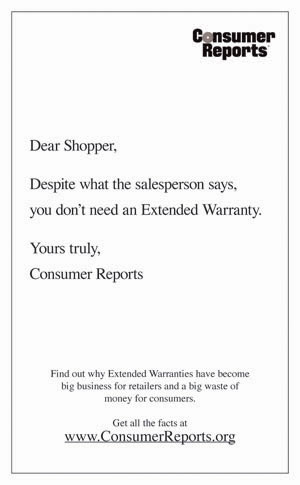In our 22nd year of providing the latest & greatest Warranty Information.
-
U.S. Semiconductor Warranties: Total warranty claims and accruals were down for the semiconductor & PCB industry after reaching record-breaking highs in 2022. However, the industry set a new record high for warranty reserves.
Jul 18, 2024
-
U.S. Electronics Warranty Report: For this report, we're presenting 21 years of warranty expense data for the computer, consumer electronics, semiconductor, data storage, and peripherals industries. All but semiconductors have seen totals fall over the past two decades, due to the growing market share of internationally-based companies, as well as some key players such as Apple, Microsoft, and Google not reporting their warranty costs.
Jul 11, 2024
-
Japanese Automaker Warranty Expenses: Honda significantly grew its warranty accruals and reserves during fiscal 2023, due to some large-scale global recalls. Toyota also issued several large recalls during fiscal 2023, but fared better with overall costs. However, the devaluation of the Japanese yen against the U.S. dollar has driven up warranty costs in yen overall.
Jul 4, 2024
-
U.S. Power Generation Equipment Warranties: While General Electric used to dominate the U.S.-based power generation equipment industry, many renewable energy manufacturers have emerged into the market in the past decade. Some of them offer warranties longer than they've existed as companies, and they report a lot of changes of estimate and large fluctuations in annual warranty expenses, often without much explanation.
Jun 27, 2024
-
U.S. HVAC & Appliance Warranty Report: Unlike most the other U.S.-based industries we've covered lately, which have seen warranty costs rise due to inflation and recalls, the total warranty expenses of the HVAC & appliance industries have fallen in recent years, due to major mergers and spin-offs.
Jun 20, 2024
-
Singapore reminds car dealers to remove warranty repair restrictions.
Singapore Business Review, Jul 25, 2024
-
Evolution Warranties strikes deal with GSF to save dealers thousands on parts.
Motor Trader (UK), Jul 25, 2024
-
Stubborn warranty costs push down Ford's 2Q profits, causing stock plunge.
Associated Press, Jul 24, 2024
-
Piper Sandler keeps bullish stance on Tesla amid warranty expense concerns.
Investing.com, Jul 24, 2024
-
Woot's refurbished Apple Watch SE 2 comes with a 2-yr. warranty.
Phone Arena, Jul 24, 2024
-
Homeowner says Choice Home Warranty refuses to pay for pool repair.
KTVK-TV Phoenix, Jul 24, 2024
-
Warranty lag times leave Las Vegas Valley homeowners frustrated.
KTNV-TV Las Vegas, Jul 24, 2024
-
Bollinger Motors announces warranty coverage for its Class 4 commercial EV truck.
Press Release, Jul 23, 2024
-
Renault Australia makes the 7-yr. warranty coverage permanent for Koleos.
Car Expert (AU), Jul 23, 2024
-
Andersen introduces 7-yr. warranty on all new home charger installations.
EV Fleet World (UK), Jul 23, 2024
-
Nevada insurance officials explain how to file a home warranty complaint.
KVVU-TV Henderson NV, Jul 23, 2024
-
Home renovations should come with transferable warranties, executive suggests.
Forbes, Jul 23, 2024
-
ABL to provide marine warranty survey for French-Spanish subsea interconnector.
Offshore Energy, Jul 22, 2024
-
Cover Genius CEO explains additional protection features for retailers.
Forbes, Jul 19, 2024
-
ATN Corp. introduces 5-Year warranty on thermal scopes.
American Rifleman, Jul 18, 2024
World's Largest Warranty Problems:
On the one hand, U.S.-based manufacturers are required to disclose their warranty expenses to investors. On the other hand, they try their best to obscure the news and bury it in plain sight when something really expensive happens. But as the saying goes, a picture's worth a thousand words. And in the charts that follow, it's hard to hide a billion-dollar warranty problem.
Over the past few years, every once in a while, a set of warranty expense numbers comes in that makes us wonder if there's been a typographical error in a company's annual report. Suddenly, there's a billion-dollar warranty expense and there's no explanation at all anywhere in the document.
Other times, a major safety recall or some other big event makes the news, and inevitably it gets reduced into a major escalation in a company's warranty expenses. For these, we don't need any additional explanations, but we never do find out exactly how much it costs.
Consumer Reports' 2006 Extended Warranty Ad:
There was panic in the industry when one of the most trusted consumer advocates told its readers not to buy extended warranties. Ten years later, the magazine's advice is almost forgotten, and the industry is bigger than ever.
In a few weeks we'll be marking a very important anniversary in the service contract industry. Just as the holiday shopping season of 2006 was getting under way, a major consumer product ratings publisher told shoppers that extended warranties were a waste of money. On Tuesday morning, November 14, 2006, the USA Today newspaper carried on the back page of the "Money" section (page 10B), the following full-page ad placed by Consumer Reports magazine:

Reaction was swift. Some said both the frequency of breakdowns and the average cost of repair was higher than Consumer Reports was calculating, making service contracts a better value than was admitted. Others said it was simply a matter of price, in that nobody would deny the value of a service contract priced at 0% of the product's price (in other words, free).
VW's Emissions Warranty Scandal:
Some students cheat on tests. But companies rarely do, because the cost of getting caught is very high. And in the long run, someone usually snitches. So isn't it ironic that a bunch of students caught one of the world's largest manufacturers cheating on a test?
At Volkswagen AG, the world's largest passenger car manufacturer, and the world's largest warranty provider, with some of the industry's highest warranty expense rates, things just went from bad to worst. The company, which spent 7 billion euro (US$7.9 billion) last year on warranty claims, could end up paying an additional US$3.6 billion in claims and fines to fix a major problem with almost half a million diesel cars that have been found to be illegally polluting the air.
It all started last May, when the International Council on Clean Transportation, a small nonprofit organization focused on the reduction of vehicle emissions, and a research team at the Center for Alternative Fuels Engines and Emissions within West Virginia University, documented the discrepancy between test levels and real world nitrogen oxide (NOx) emissions levels from new passenger cars equipped with diesel engines.
Warranty Expenses When Conglomerates Break Up:
In early 2020, two diversified companies spun off product lines to become "pure plays" in specific industries. And now, seven quarters later, the warranty expense metrics of the five new companies, which were previously blended together, have diverged in very distinct ways.
After news broke last month about the plans of General Electric Company and Johnson & Johnson to break themselves into three and two companies, respectively, it made us recall the break-ups of last year, when United Technologies Corp. and Ingersoll-Rand plc reorganized themselves into three and two units.
As we wrote about in the May 28, 2020 newsletter, our main interest in the break-ups of these conglomerates was how their subsequent financial statements would allow us to get a much clearer view of their warranty expenses, since the aerospace claims and accruals would no longer be blended with those of the air conditioning or industrial/building products lines of business. And now, with nearly two years of separate data in hand, that clearer picture has emerged.
The A-Team of Extended Warranties:
Ten companies, whose names all begin with the letter A, control at least 57% of the $40 billion U.S.-based and consumer-facing service contract industry. Most are administrators and/or underwriters of the protection plans, but a few are electronics manufacturers and/or retailers.
Extended warranties are a huge business in the U.S. Last year, consumers spent an estimated $17 billion on vehicle service contracts, and roughly $23 billion on protection plans for their appliances, electronics, computers, and mobile phones.
A huge chunk of that money is going to the people that sell them: the dealers and retailers who collect very healthy sales commissions and move on. But the rest is going to a long list of service contract administrators and insurance underwriters who seem to retain the risk and do all the work.
